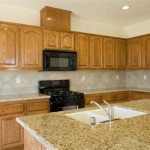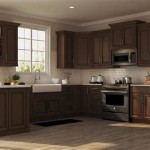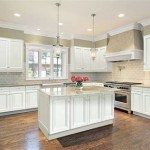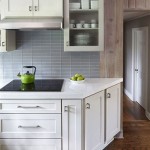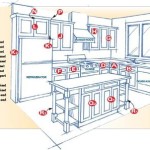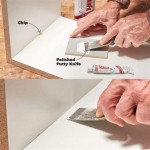Where Are Most Kitchen Cabinets Made?
The kitchen cabinet industry is a global one, with manufacturing occurring in various locations around the world. Understanding these key production hubs can be beneficial for consumers, designers, and industry professionals alike. Considerations such as cost, lead times, material availability, and labor practices often influence where manufacturers choose to establish their operations.
Currently, a significant portion of ready-to-assemble (RTA) and stock kitchen cabinets sold in North America originates from China. China’s expansive manufacturing capabilities, combined with lower labor costs, have made it a dominant force in the production of more affordable cabinet options. These cabinets are typically constructed from particleboard or medium-density fiberboard (MDF) and often feature less elaborate designs and hardware compared to their higher-end counterparts.
Beyond RTA and stock cabinets, China also plays a role in the production of semi-custom and custom cabinetry. While not as prevalent as RTA production, some North American companies utilize Chinese factories for specific components or outsource entire cabinet lines. This approach allows companies to offer competitive pricing while potentially leveraging specialized manufacturing processes available in China.
Moving closer to the North American market, Mexico represents another important manufacturing hub for kitchen cabinets. Mexico’s proximity reduces shipping costs and lead times compared to Asian suppliers, making it an attractive option for companies targeting the North American market. Mexican-made cabinets often feature similar construction materials to those produced in China, with varying levels of customization available depending on the manufacturer.
Within the United States, domestic cabinet production remains a significant part of the industry. American-made cabinets often cater to the higher end of the market, prioritizing custom designs, higher-quality materials, and specialized craftsmanship. Solid wood, plywood, and high-quality MDF are commonly used in domestically produced cabinets. While typically more expensive than imported options, American-made cabinets can offer advantages in terms of shorter lead times, greater customization possibilities, and support for local economies.
Canada also plays a role in the North American cabinet market, producing both stock and custom options. Canadian manufacturers often focus on serving the domestic market, although some export activity occurs. Similar to the U.S., Canadian-made cabinets often incorporate higher-quality materials and craftsmanship, with a focus on sustainability and environmental responsibility in some cases.
While less prominent on the global stage, Europe maintains a tradition of high-quality cabinet manufacturing. Countries like Italy and Germany are known for their sophisticated designs, innovative hardware, and meticulous craftsmanship. European-made cabinets are often considered a premium option, utilizing advanced manufacturing techniques and premium materials. These cabinets often appeal to a discerning clientele seeking unique designs and superior quality.
Vietnam has also emerged as a growing player in the kitchen cabinet industry. Offering a combination of competitive labor costs and increasing manufacturing expertise, Vietnam attracts companies looking for alternative sourcing options. Vietnamese-made cabinets primarily target the lower to mid-range segments of the market, often utilizing similar materials and construction methods as those seen in Chinese and Mexican production.
Malaysia represents another Southeast Asian nation involved in cabinet manufacturing. Malaysian manufacturers typically focus on exporting their products to various global markets, including North America, Europe, and Australia. The quality and design of Malaysian-made cabinets can vary depending on the manufacturer and target market.
The choice of where to source kitchen cabinets depends on a complex interplay of factors. Cost, quality, lead times, design preferences, and environmental considerations all contribute to the decision-making process. Consumers and industry professionals benefit from understanding the global landscape of cabinet manufacturing to make informed choices that align with their specific needs and priorities.
As the global economy continues to evolve, the landscape of kitchen cabinet manufacturing is likely to shift as well. Emerging markets may become more prominent, while established production hubs could adapt their strategies to maintain competitiveness. Staying abreast of these changes will be crucial for navigating the ever-changing dynamics of the kitchen cabinet industry.

How To Find The Best Kitchen Cabinets 2024 Guide Forbes Home

11 Best Kitchen Cabinets In 2024 Our Top Picks

Top 10 Characteristics Of High Quality Kitchen Cabinets Premier Kitchens And

What Are Kitchen Cupboards Made Of And Why Roots Kitchens Bedrooms Bathrooms

7 Best Kitchen Cabinet Materials To Protect You From Poor Quality Horrors

9 Best Kitchen Cabinets Of 2024

How To Choose The Best Kitchen Cabinet Design In Singapore
9 Best Cabinet Materials How To Choose Quality Cabinetry Vevano

9 Best Kitchen Cabinets Of 2024

How To Choose The Right Kitchen Cabinets
Related Posts



